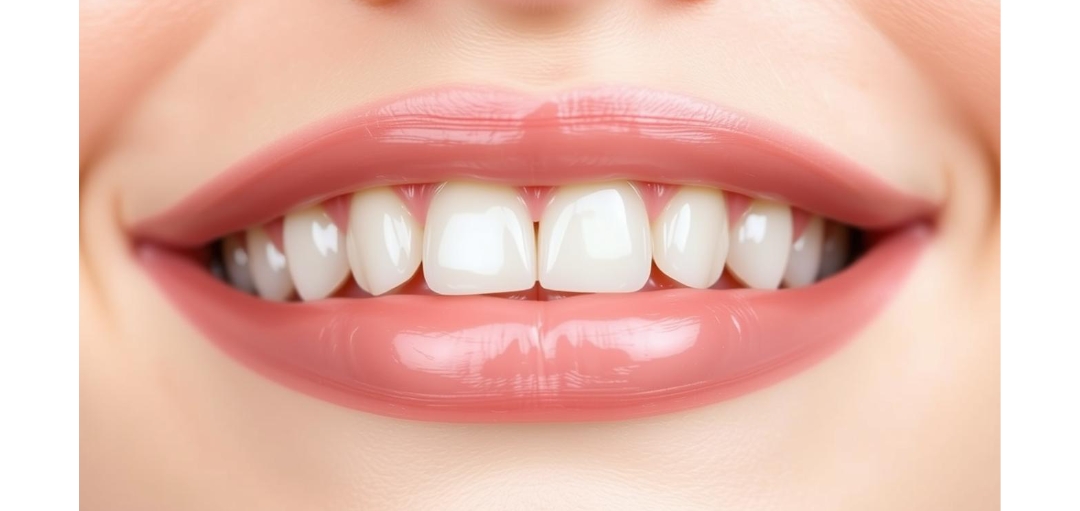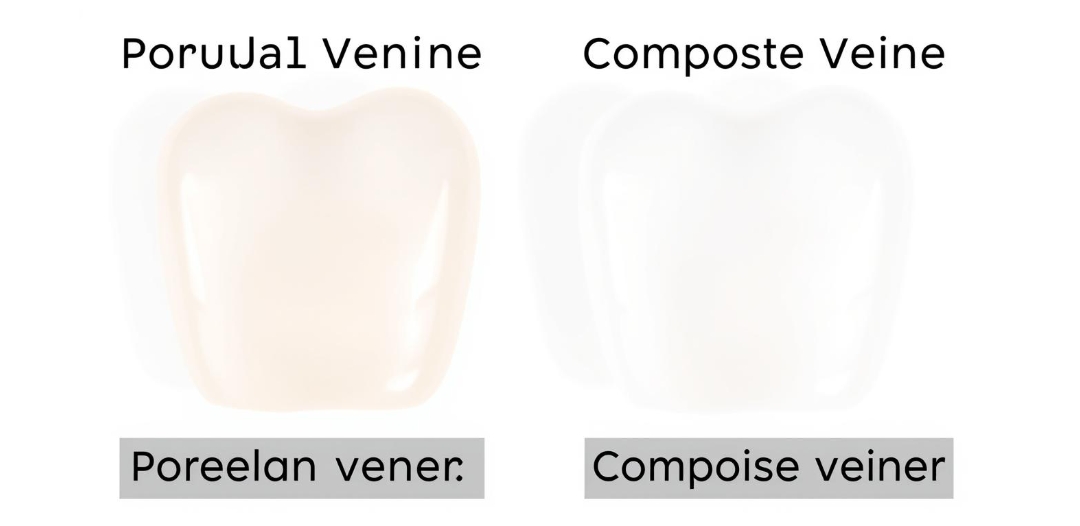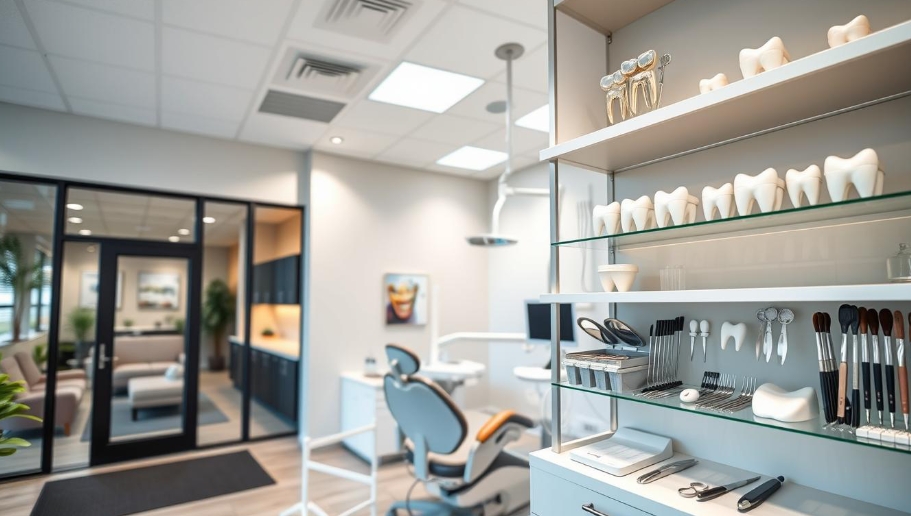Did you know over 50% of people can’t spot high-quality dental work at first glance? Modern cosmetic enhancements blend so seamlessly that even close observers often miss the subtle clues. But if you’ve ever wondered whether someone’s flawless smile comes from natural teeth or expert craftsmanship, there are telltale signs to watch for.
Perfectly uniform teeth, an unusually bright white shade, and slightly thickened edges near the gumline often indicate custom dental restorations. While these enhancements are designed to look natural, trained professionals like those at Digital Aesthetic Dentistry in Jacksonville can help you understand the differences. Their team at 10915 Baymeadows Rd #106 specializes in creating – and identifying – lifelike smile transformations.
If you’re curious about cosmetic dentistry options or want a professional evaluation, you can reach their office at 904-619-6478. Many patients visit this Jacksonville dental clinic not just for treatments, but also to learn how modern techniques achieve such natural-looking results.
Key Takeaways
- Uniform tooth shape/size often signals cosmetic enhancements
- Overly bright white shades may indicate artificial restorations
- Subtle texture differences appear near gum lines
- Alignment perfection rarely occurs naturally
- Local experts offer free smile assessments
- Digital Aesthetic Dentistry provides Jacksonville consultations
What Are Veneers?
Ever seen a perfect smile and wondered how it got that way? Dental veneers are likely the answer. These thin, custom-made shells cover the front of your teeth. They’re a quick fix for stains, chips, or gaps, making your smile flawless.
Definition and Purpose
Dental veneers are thin coverings made from porcelain or composite resin. They’re bonded to your teeth to fix cosmetic issues. They’re a top choice in cosmetic dentistry for their simple yet effective results.
Clinics like Digital Aesthetic Dentistry focus on making each veneer match your natural teeth. This ensures your smile looks natural yet perfect.
Types of Veneers
There are two main types of veneers, each with its own benefits:
- Porcelain Veneers: These are durable and resistant to stains. They last 10–15 years with good care.
- Composite Veneers: Made from resin, they’re more affordable and can be applied in one visit. But, they might need more frequent touch-ups.
Your dentist will help you pick based on your needs and budget. Porcelain is best for long-term fixes, while composite is good for quick, minor changes.
Common Signs of Veneers
Spotting veneers is easier when you know what to look for. Modern dentistry makes stunning results, but veneers often lack natural imperfections. Let’s look at three signs that might show someone’s smile has been enhanced with veneers.

Excessively White Teeth
Natural teeth have slight color variations, not the “paper-white” brightness veneers often have. Veneers are whiter because:
- They resist staining better than natural enamel
- Dentists can choose shades beyond natural colors
- The surface lacks the micro-texture that diffuses light
This is why veneers before and after photos show dramatic whitening. While attractive, this uniformity can seem less real than untreated teeth.
Uniform Shape and Size
Nature loves variety, and real teeth show minor asymmetries. Veneers have a “flawless” alignment that’s mathematically precise:
- Identical widths across front teeth
- Perfectly straight gum lines
- Consistent edge shapes
Porcelain veneers are custom-made for this uniformity, making them popular in smile makeovers. But, this perfection can sometimes look too polished compared to natural teeth.
Reflections of Light
Veneers interact with light differently than natural teeth. Their smooth surfaces create distinctive light patterns:
- Brighter surface reflections
- Sharper highlights along edges
- Less light diffusion through the material
This shine is noticeable in photos or under bright lights. While beautiful, it’s a departure from how light interacts with natural tooth enamel.
For those curious about their smile potential, Digital Aesthetic Dentistry offers personalized assessments. They use advanced imaging technology to show you how natural-looking or dramatic your veneers before and after transformation could be.
The Role of Dental Professionals
Getting veneers isn’t something you can do alone. It’s a team effort with skilled dental experts. You might admire someone’s perfect smile, but it’s the work of experts that makes it happen.

Who Installs Veneers?
Only licensed cosmetic dentists or prosthodontists can do veneers procedures. They spend years learning about smile design and materials. For example, Digital Aesthetic Dentistry uses 3D imaging to plan your veneers.
This ensures they fit perfectly and look natural with your face.
How Veneers Are Applied
The process usually takes 2-3 visits. Here’s what happens:
- Preparation: Your dentist removes a thin layer of enamel (about 0.5mm) to fit the veneers.
- Temporary Setup: You’ll wear temporary veneers for 1-2 weeks while your custom set is made.
- Bonding: Your dentist attaches the veneers with dental cement, using light to set them in place.
“A great smile starts with great preparation,” says a lead dentist at Digital Aesthetic Dentistry. “We adjust each veneer chairside until it looks natural.” This careful work avoids common mistakes like bulky edges or gaps.
Differences Between Veneers and Other Dental Options

Choosing the right dental treatment can feel overwhelming. Veneers, crowns, and bonding all address cosmetic concerns, but they work differently. Let’s break down how veneers stack up against these alternatives so you can make an informed choice.
Veneers vs. Crowns
Veneers cover only the front surface of teeth, preserving more natural structure. They’re ideal for fixing chips, stains, or minor gaps. Crowns, on the other hand, encase the entire tooth. This makes them better for severely damaged teeth but requires removing more enamel.
Durability-wise, crowns often last 10–15 years, slightly longer than porcelain veneers. But veneers offer a more natural look since they mimic translucent enamel. Cost varies too: veneers average $925–$2,500 per tooth, while crowns range from $1,000–$3,500.
|
Feature |
Veneers |
Crowns |
|
Tooth Preparation |
Minimal enamel removal |
Significant reshaping |
|
Best For |
Aesthetic fixes |
Structural repairs |
|
Longevity |
7–15 years |
10–15 years |
Veneers vs. Bonding
Dental bonding uses composite resin to fix minor flaws in one visit. It’s cheaper ($300–$600 per tooth) and reversible, but stains easily and lasts just 3–5 years. Veneers require two appointments but resist discoloration and maintain their shape longer.
Bonding works well for small chips or gaps. For larger issues, veneers provide a seamless, durable solution. At Digital Aesthetic Dentistry, we prioritize preserving your natural teeth while enhancing your smile—a balance veneers achieve effortlessly.
- Bonding pros: Affordable, quick, no enamel removal
- Veneers pros: Stain-resistant, long-lasting, natural appearance
A Closer Look at the Material
Choosing veneers means picking a material that affects how they look and last. We’ll explore what makes porcelain and composite unique. Plus, how experts help you pick the right one for you.

Porcelain vs. Composite Veneers
Porcelain veneers look very natural. They don’t stain from coffee, wine, or smoke because of their glass-like surface. They cost more, but many think their lifelike shine is worth it.
Composite veneers are made from resin that dentists shape on your teeth. They’re cheaper and fix small chips fast. But, they might turn yellow over time and last about half as long as porcelain.
“We match materials to daily habits. If you grind teeth or love red wine, porcelain often makes sense. For temporary fixes or tighter budgets, composite works.”
– Digital Aesthetic Dentistry Advisory Team
Durability and Maintenance
Porcelain is stain resistant, so you need fewer touch-ups. But, it needs gentle care:
- Avoid chewing ice or hard candy
- Use non-abrasive toothpaste
- Get professional cleanings every 6 months
Composite needs more care but can be fixed easily. Chips can be fixed by adding new resin. Plan to replace them every 5-10 years, based on your diet and bite.
|
Factor |
Porcelain |
Composite |
|
Lifespan |
10-15 years |
5-7 years |
|
Stain Resistance |
High |
Moderate |
|
Cost (per tooth) |
$925-$2,500 |
$250-$1,500 |
How to Care for Veneers
Keeping your veneers in top shape is easy with smart habits. They will stay bright and strong for years. This way, you avoid unexpected veneer cost surprises. Here are the key steps to maintain your investment.
Everyday Dental Hygiene
Care for your veneers like natural teeth, but with some adjustments. Use a soft-bristled toothbrush and non-abrasive toothpaste to avoid scratches. Whitening formulas are good, but stay away from gritty charcoal pastes that can dull them.
Floss every day to remove plaque around the edges. For stains from coffee or wine, try a gentle baking soda rinse. Don’t skip regular dental cleanings every six months. Your hygienist can catch problems early.
Avoiding Damage
Veneers are tough, but they can still get damaged. Avoid chewing ice, pen caps, or fingernails. If you love crunchy snacks, cut apples into slices instead of biting into them.
If you grind your teeth at night, ask your dentist about a custom guard. It’s cheaper than fixing a chipped veneer. Protecting them daily helps them last longer and saves money in the long run.
Popularity of Veneers in the U.S.
Social media and Hollywood have made veneers popular. Now, over 9 million Americans have them. This is a big jump since 2018. Let’s look at why veneers are so in demand.
Red Carpet to Your Feed: The Celebrity Effect
Tom Cruise showed off his $25,000 veneers in 2002. Since then, stars like Miley Cyrus and Cardi B have shared their dental work on Instagram. Their perfect smiles set new beauty standards:
- 72% of cosmetic dentists say patients bring celebrity photos
- Instagram #VeneerTransformation posts have tripled since 2020
- TikTok veneer reveal videos get 2M+ views
People wonder: “Where can I get the best veneers like my favorite influencer?” The answer is in modern dental art and technology.
Today’s Top Trends in Smile Design
Aesthetic dentistry now aims for natural-looking enhancements. Techniques have changed a lot:
|
Feature |
Traditional Approach |
Modern Method |
|
Tooth Preparation |
0.5mm enamel removal |
0.3mm or less |
|
Customization |
Standard shapes |
3D-printed unique designs |
|
Treatment Time |
3+ visits |
Same-day options |
Jacksonville’s Digital Aesthetic Dentistry is leading this change. They use scanners to make veneers that match your teeth perfectly. Their method keeps 89% of your enamel and gives you a stunning smile.
“Patients no longer want ‘perfect’ teeth – they want teeth that look naturally exceptional.”
Dr. Lisa Nguyen, Smile Design Specialist
Understanding the Cost of Veneers
Getting veneers is more than just a smile makeover. It’s also a big financial step. Prices can vary a lot. Knowing what affects the cost helps you make better choices. Let’s look at what affects your bill and how to save money.
Factors Influencing Pricing
Veneer prices aren’t the same for everyone. Several things can change the cost:
- Material type: Porcelain veneers cost $925–$2,500 per tooth. Composite resin is cheaper, at $250–$1,500.
- Lab fees: Custom designs from labs cost $100–$300 per tooth.
- Dentist expertise: More experienced dentists charge 20–30% more.
- Geographic location: Prices are higher in cities than in rural areas.
|
Factor |
Cost Impact |
Example Range |
|
Material Choice |
Highest variable |
$250–$2,500/tooth |
|
Preparation Complexity |
Moderate |
+$200–$800 |
|
Dentist Experience |
Significant |
+15–40% |
Payment Options Available
Most dental insurance doesn’t cover veneers because they’re cosmetic. But, Digital Aesthetic Dentistry has flexible options:
- In-house payment plans with 0% interest for 12 months
- Third-party financing through CareCredit® or LendingClub
- Health Savings Account (HSA) compatibility
“We believe everyone deserves access to confident smiles. Our team works closely with patients to find affordable pathways.”
—Digital Aesthetic Dentistry
For a personalized cost estimate, call 904-619-6478. Many patients get approved for financing plans the same day.
Assessing If Veneers Are Right for You
Thinking about veneers? It’s a big decision. They can change your smile, but they might not be right for everyone. First, learn about their good and bad points.
Consultation With a Dentist
Visit Digital Aesthetic Dentistry in Jacksonville, FL (1234 Riverside Ave), to talk about your smile dreams. Their experts will check your teeth, gums, and how your teeth fit together. They use cool tech to see if veneers can fix your issues or if something else is better.
Considering Alternatives
Not sure about veneers? There are other choices. Whitening can make teeth brighter, and clear aligners can fix small gaps. For tiny chips, bonding is a cheaper option. The team at this dental clinic will suggest what’s best for you based on your life and what you want.
FAQ
What do veneers usually look like up close?
They often appear very smooth and symmetrical. In some cases, they might have a slightly reflective or glossy finish that differs from natural enamel.
Are veneers always bright white?
Not necessarily. Veneers come in many shades. While some people choose bright white for a Hollywood look, others go for more natural tones that match their complexion and age.
Do veneers make teeth look “too perfect”?
They can—if not customized well. Natural teeth have slight variations and imperfections. If someone’s teeth look identical in shape, size, and colour, they might have veneers.
Do veneers affect how someone talks?
Initially, yes. Some people experience slight changes in speech (like a lisp) when they first get veneers, but this usually resolves within a few days or weeks.
Can you feel veneers if you run your tongue over them?
Yes, but only slightly. Veneers feel very smooth—sometimes more so than natural teeth. A person with veneers might notice the difference more than others would.
Do veneers ever look fake?
They can if they’re too large, too white, or poorly shaped. However, when done well by an experienced dentist, veneers can look completely natural.
Do people with veneers still need to brush and floss?
Absolutely. Veneers cover the front of the tooth, but the natural tooth underneath still needs proper care to prevent decay and gum disease.
Are veneers noticeable on camera or in photos?
Sometimes. Bright lighting can highlight veneers if they’re much whiter than the person’s natural teeth or if the texture looks overly polished.





























